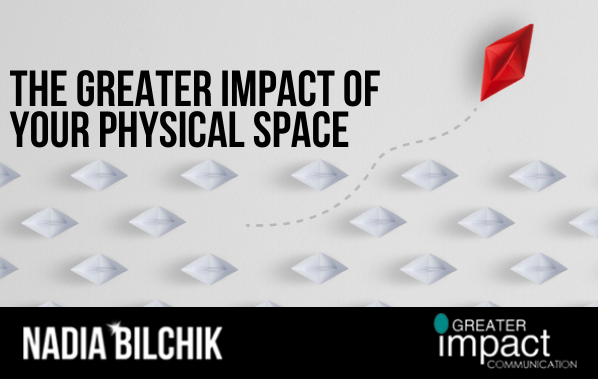
There is a lot of talk about the ways in which powerful verbal communication can contribute to career success. You’ve probably heard tips like, “Minimize your ‘ums’ and ‘you knows.'” And as women, we’re often told we should stop using “apologetic” language. For example, it’s better to tell your coworker, “I’d like to meet with you later this week,” than it is to say, “I just wanted to see if maybe you had a little time to talk this week.”
These are certainly important suggestions that can go a long way toward helping you snag that next promotion or raise. But the way you physically present yourself is crucial, as well. Here are a few tips to help you use your physical presence to your best advantage.
Take up space
You don’t have to hide in the corner. Instead, the next time you have a meeting, take a seat in the middle of the room or near the head of the table. Think about school – which students tend to get called on the most? Typically the ones near the front of the classroom. And try to avoid making yourself appear physically smaller. Sit up tall, place your arms on the armrests of your chair, rather than folding them in front of you.
Dress appropriately
The idea that you should “dress for the job you want, not the one you have” is practically a cliché. But what exactly does that mean? Well, what it doesn’t mean is that you need to don a generic, corporate uniform every day. Rather, the point is that you should look polished and put together. Respect your company’s dress code. You want to give the impression that you’ve put some thought into your appearance. Your supervisors will be less inclined to believe that you will give your work the time and effort it deserves if it looks like you’re not giving yourself proper care and attention. You can express your individuality through jewelry and accessories, but keep your clothes and hair neat and professional.
Mind your body language
Even if you’re saying all the right things, your message will be undermined if your body language is saying something different. Don’t fidget or squirm. Avoid postures that may be negatively interpreted. For example, angling your body away from the person you’re speaking to can suggest that you’re either displeased with them or you’re bored with the conversation. Maintain eye contact if it’s culturally appropriate, and greet others with a firm handshake. If you’re in a one-on-one meeting, mirroring the other person’s body language can help them feel like the two of you are connecting. For example, if the other person leans back in her chair and assumes a more relaxed posture, feel free to do the same – but be sure you do this in a subtle way. You don’t want others to think you’re trying to imitate them.
The Great Impact of learning how to NOT LOSE IT!
The Greater Impact of Understanding the PAIN Factor
The Greater Impact of Different Perspectives



